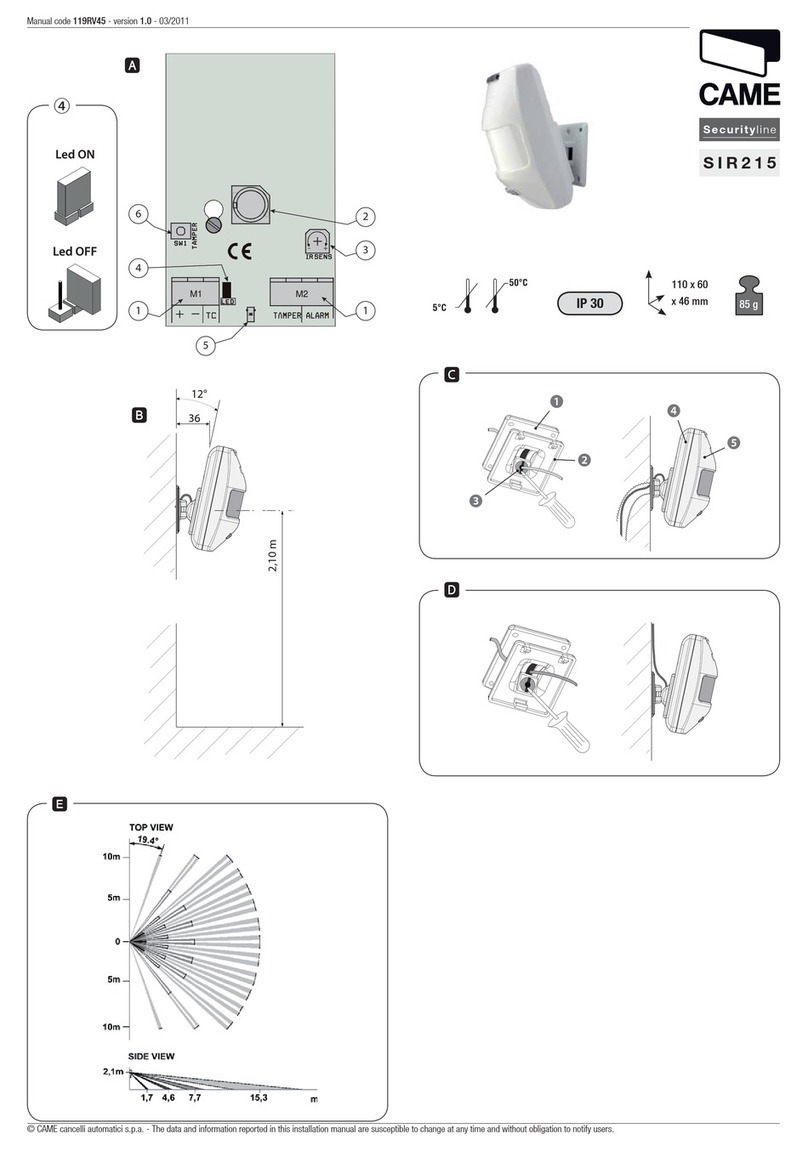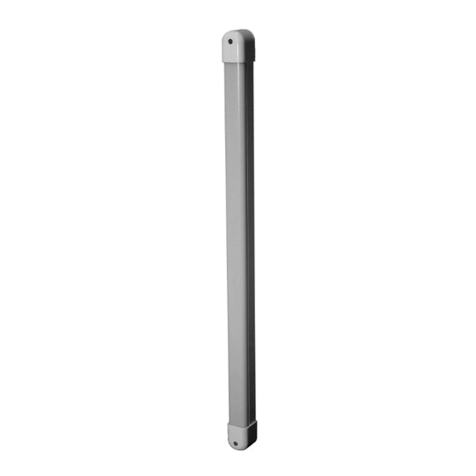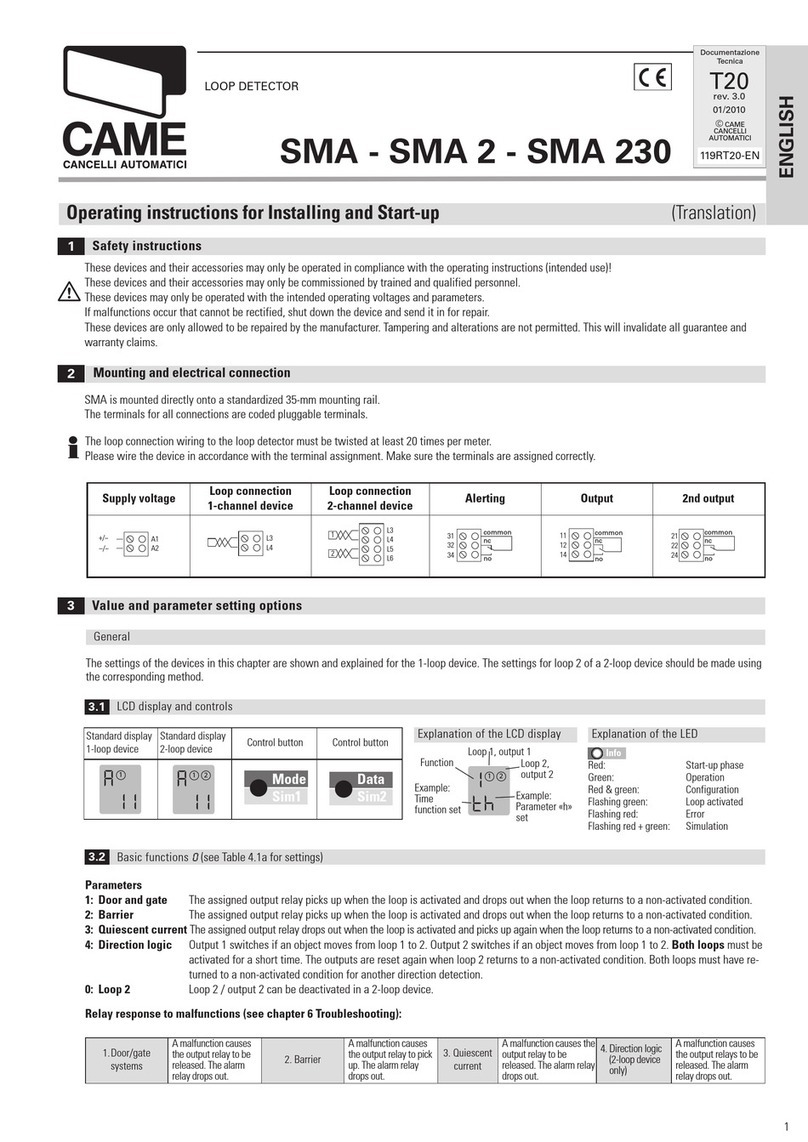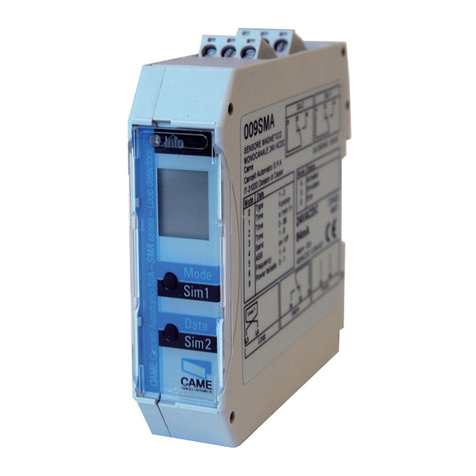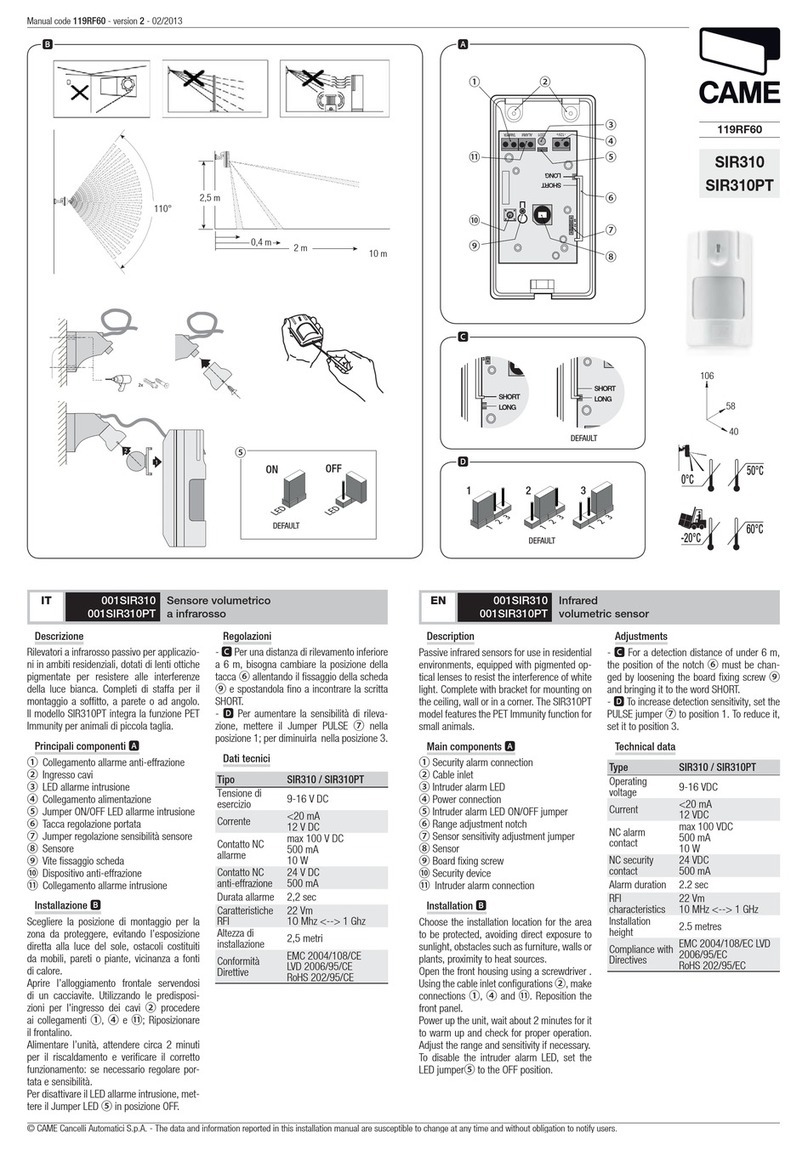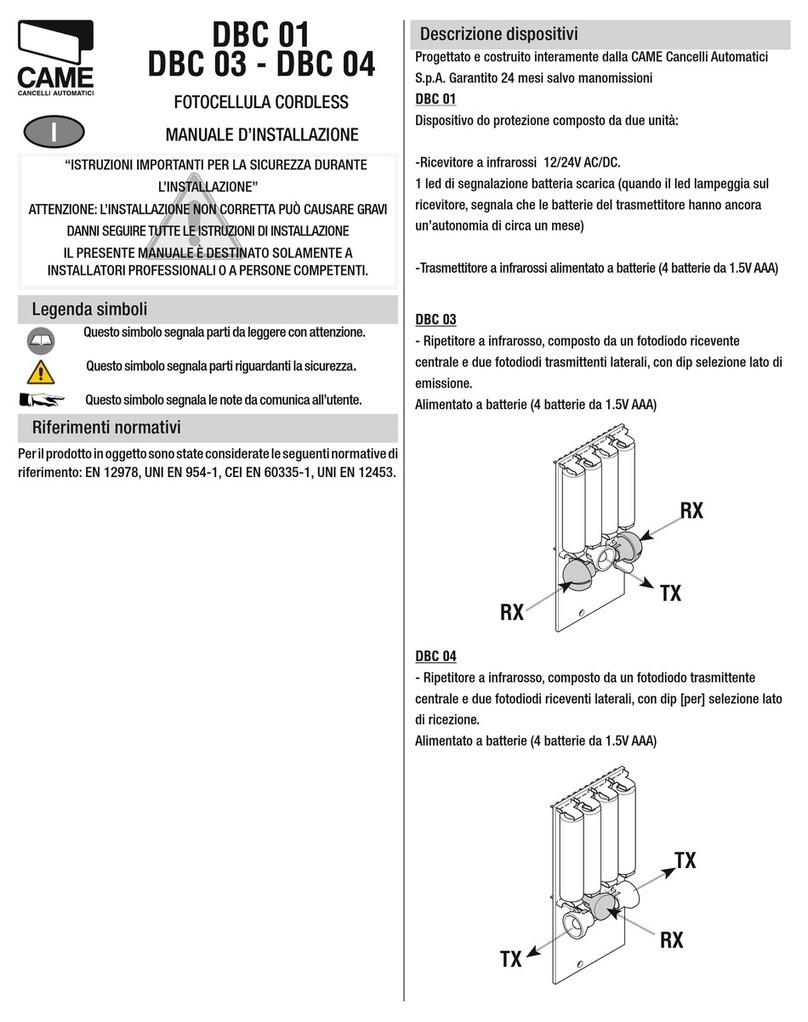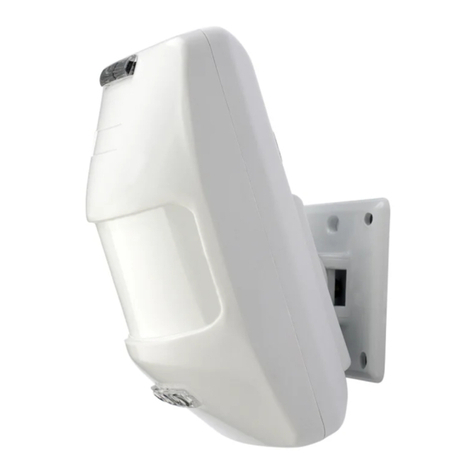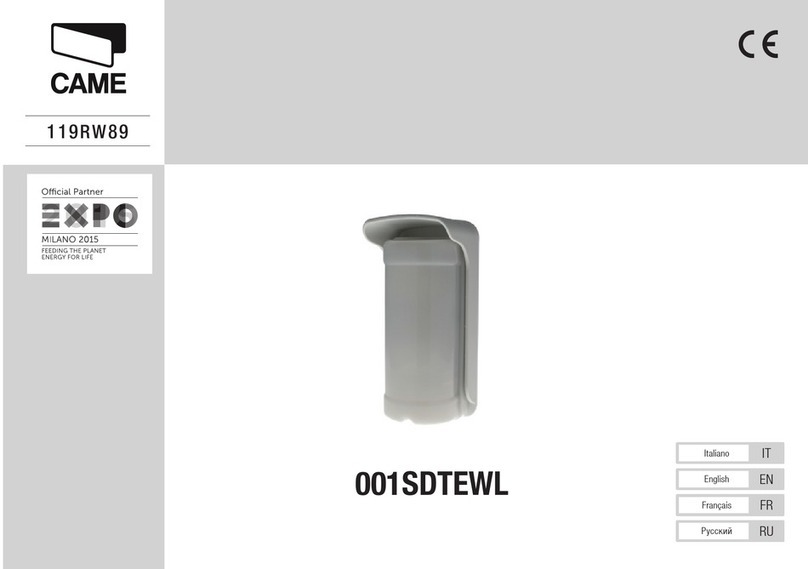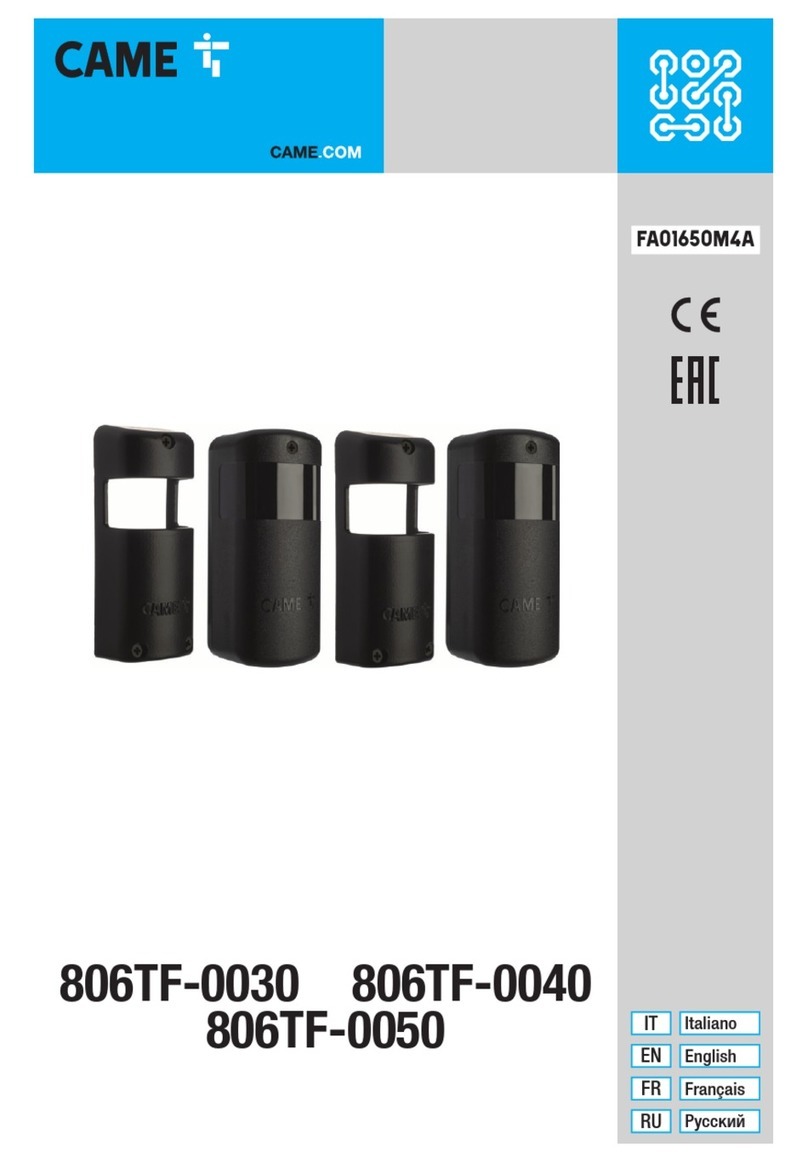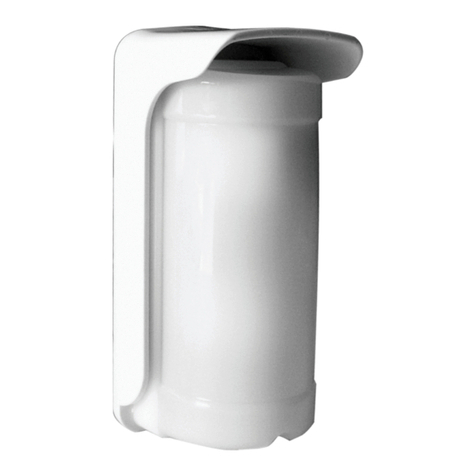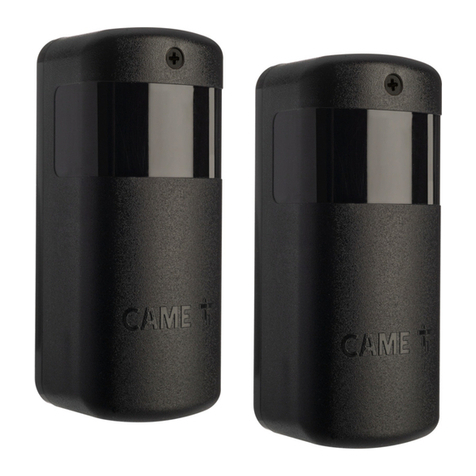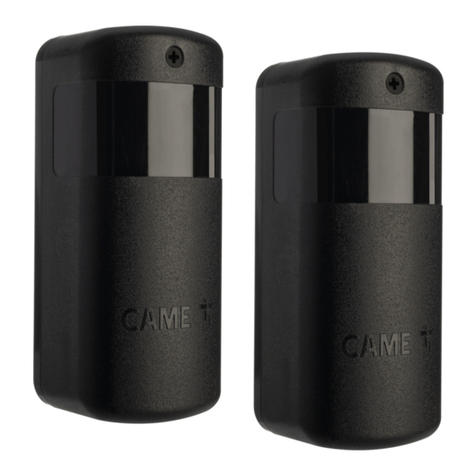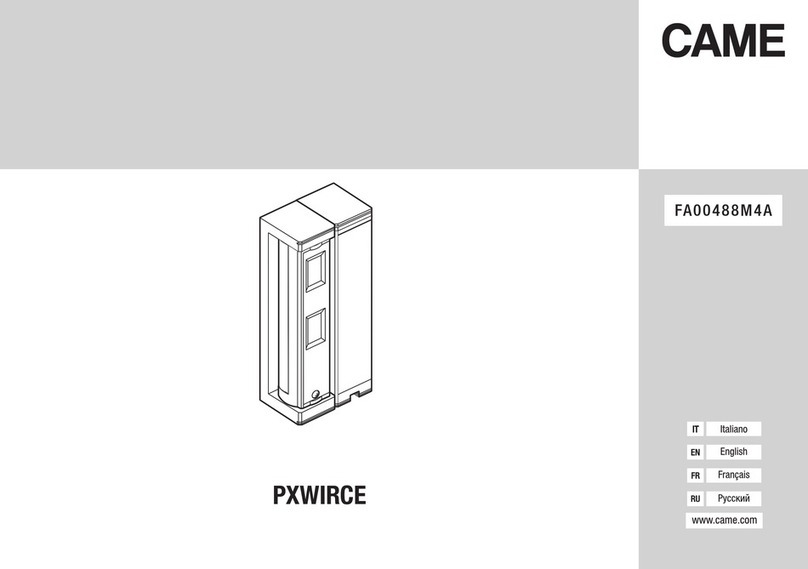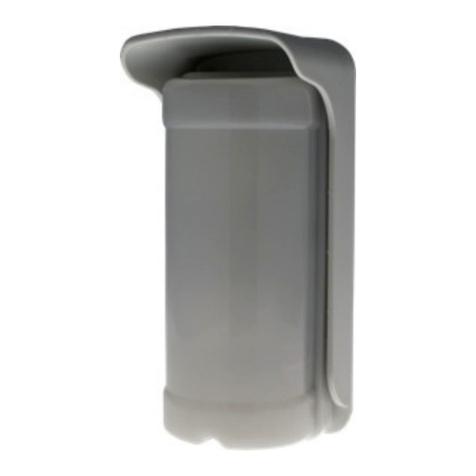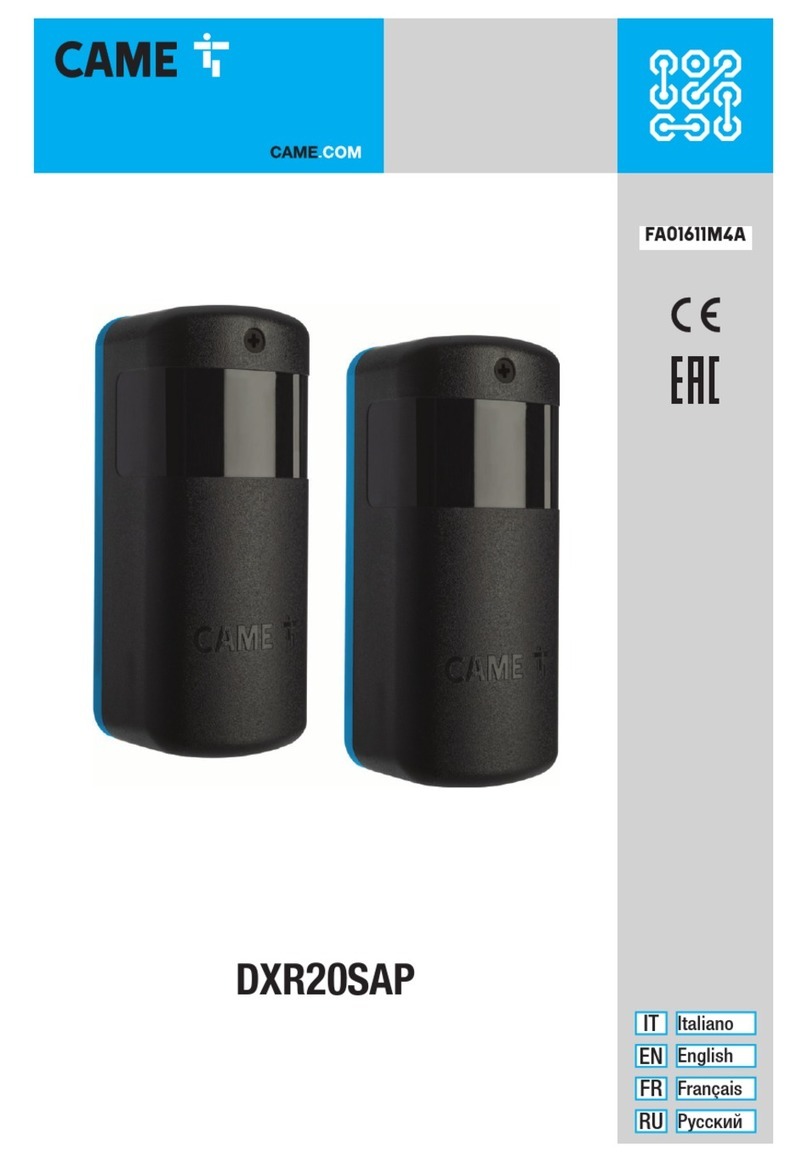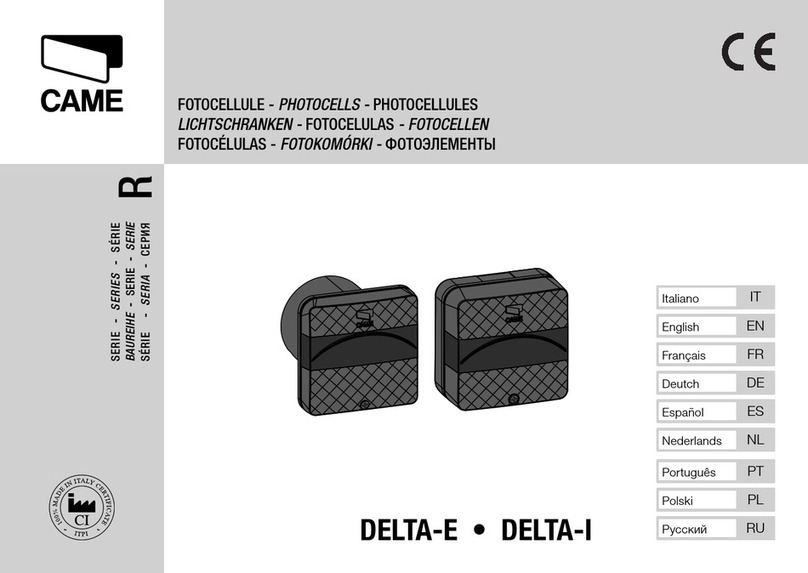
2
1
4
5
1
1
3
1
1
2
1
2
1
2
1
1
1
2
1
2
3
1
2
4
3
2
MR8534-70-90 / FA01345M06--Traduzione delle istruzioni originali -- 4SAFE / 42.7707 / V5 – 06.19
SEGNALI LED
Il LED arancione
lampeggia 1 volta
ogni 3 secondi.
Il LED arancione
rimane acceso in
permanenza.
Il LED arancione
lampeggia
velocemente.
Lanciare una calibrazione.
Rispedirci il rilevatore indietro per verifica tecnica.
Mantenere il pulsante premuto per confermare
la regolazione del tasto DIP.
Interrompere e ripristinare l’alimentazione.
Se il LED arancione lampeggia ancora, sostituire il
rilevatore.
Il rilevatore non
reagisce ma si
puó lanciare una
calibrazione.
Verificare i cavi.
- CollegaRe il ROSSO ed il BLU all’uscita monitorata.
- Se l’operatore non ha monitoring:
CollegaRe il BLU su 0V e il ROSSO su +12 V - 30 V DC.
Il LED arancione
lampeggia 2 volte
ogni 3 secondi.
Il LED arancione
lampeggia 3 volte
ogni 3 secondi.
Il LED arancione
lampeggia 4 volte
ogni 3 secondi.
Il LED arancione
lampeggia 5 volte
ogni 3 secondi.
Verificare i cavi tra i moduli.
Lanciare un conteggio dei moduli:
Mantenere premuto il pulsante del MASTER.
L’alimentazione è troppo
bassa o troppo alta.
Verificare l’alimentazione.
Riducere la lunghezza del cavo o cambiare il cavo.
Il LED rosso o verde si
accende ogni tanto
o resta acceso in
permanenza.
Il rilevatore segnala un
problema interno.
Regolazione errata della
zona di non rilevazione.
La sorveglianza é attivata,
ma l’entrata di sorveglianza
non é alimentata.
Errore di comunicazione
tra i moduli.
Il rilevatore ha un problema
di memoria.
Regolazione DIP-switch in
attesa di conferma.
Il rilevatore riceve poca
energia dall’infrarosso.
Calibrazione errata
Il rilevatore è disturbato
(lampade o altro rilevatore). Selezionare una frequenza diversa per ogni modulo (DIP 2).
Lanciare una calibrazione.
Errore di calibrazione. Verificare l’altezza di montaggio.
Cambiare la posizione della vite di calibrazione.
Lanciare una calibrazione.
Disattivare lo sfondo (DIP 3 = OFF).
Verificare se il DIP 4 é in posizione corretta.
Lanciare una calibrazione.
• L’impiego del prodotto in situazioni diverse non é autorizzato e non puó essere garantito dal costruttore.
• È responsabilità del produttore effettuare una valutazione dei rischi ed installare il rilevatore e il sistema porte in conformità con
i regolamenti nazionali e internazionali e con gli standard di sicurezza applicabili.
• Il fabbricante non puó essere ritenuto responsabile di un’installazione scorretta e di regolazioni inappropriate del rilevatore.
• Il sensore deve essere installato solo da personale professionalmente qualificato.
• Riparazioni o tentativi di riparazione effettuati da personale non autorizzato invalideranno la garanzia.
Came S.p.A.- Via Martiri Della Liberta 15 - IT-31030 DOSSON DI CASIER (TV)
CAME dichiara che MR8534 / MR8570 / MR8590 è conforme alle direttive europee 2014/30 / UE
(EMC), 2006/42/CE e 2011/65/UE (RoHS).
Questo prodotto deve essere smaltito separatamente dai rifiuti urbani non differenziati.
Originale su richiesta.
PRODOTTO COMMERCIALIZZATO
Lanciare una calibrazione e uscire dal campo di
rilevazione.
Cambiare l’angolo degli spot.
Disattivare lo sfondo (DIP 3 = OFF).






